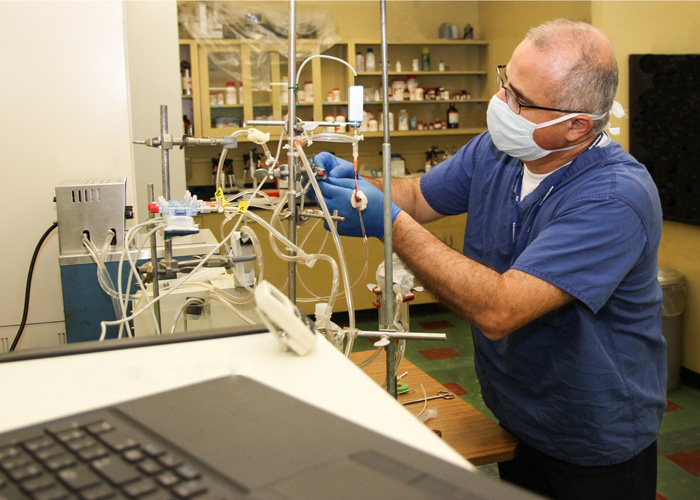LeSueur Dissertation Abstract
The mechanical behavior of skin in puncture and ballistic impact
Dissertation Date: October 7, 2024
Penetrating injuries can be caused by a variety of objects in puncture from needle insertion to stabbings and in ballistic impact from BB gun impacts to gunshot wounds. To protect against these injuries, protective countermeasures may be developed; however, effective designs require an understanding of the forces involved. The mechanical behavior of skin has been extensively studied in many different loading configurations but lacks characterization in puncture and ballistic impact, especially with blunter impactors and low-density projectiles representative of recreational ball bearings (BB) debris from explosive events. Therefore, the penetration mechanics of skin were evaluated in two distinct loading mechanisms: puncture and ballistic impact.
An in vitro methodology was established to load isolated porcine skin in puncture using an electrohydraulic load frame and custom clamping apparatus which accounted for physiologically relevant boundary conditions. The established experimental model was used to investigate the effects the impactor size, loading rate, and skin thickness during puncture of porcine skin samples (n=232), which were subjected to pre-conditioning, sub-failure, and failure trials with a 3, 5, or 8 mm spherical impactor at loading rates from 5 to 1000 mm/s. Experimental findings were supplemented with histological studies.
A computational finite element (FE) model was developed with a hyperelastic material model from the puncture experiments to evaluate multivariate interactions during blunt puncture of isolated skin. The FE model was validated with experimental force-time data for 18 loading conditions with varying impactor diameters (3–8 mm), loading rates (5–1000 mm/s), and skin thicknesses (2–3 mm). The FE model simulated puncture with spherical and screwdriver geometries of varying sizes to establish a relationship between failure thresholds and cross-sectional area of the impactor between 6–71 mm2.
The effect of size on mechanical behavior and failure thresholds of skin was also investigated during ballistic impact with fourteen BBs of stainless steel, silicon nitride, or Delrin acetal plastic with sectional densities between 0.3 and 5 g/cm2. The deformation profile was quantified as a function of impact velocity using 3D-DIC, and the resultant surface wave was used to characterize the material properties of skin. The probability of penetration was determined for each projectile, and the relationship between velocity threshold (V50) and sectional density exhibited an exponential relationship (R2=0.95).
The defined mechanical behavior and failure thresholds of skin may be used for various applications in forensic science such as assessing level of intent during puncture incidents with blunt instruments. An FE model of ballistic impact may be developed and validated with the defined deformation and failure metrics to evaluate multivariate interactions for development of protective clothing and safety regulations of recreational pellets from BB and Airsoft guns.
Return to Dissertation Schedule


